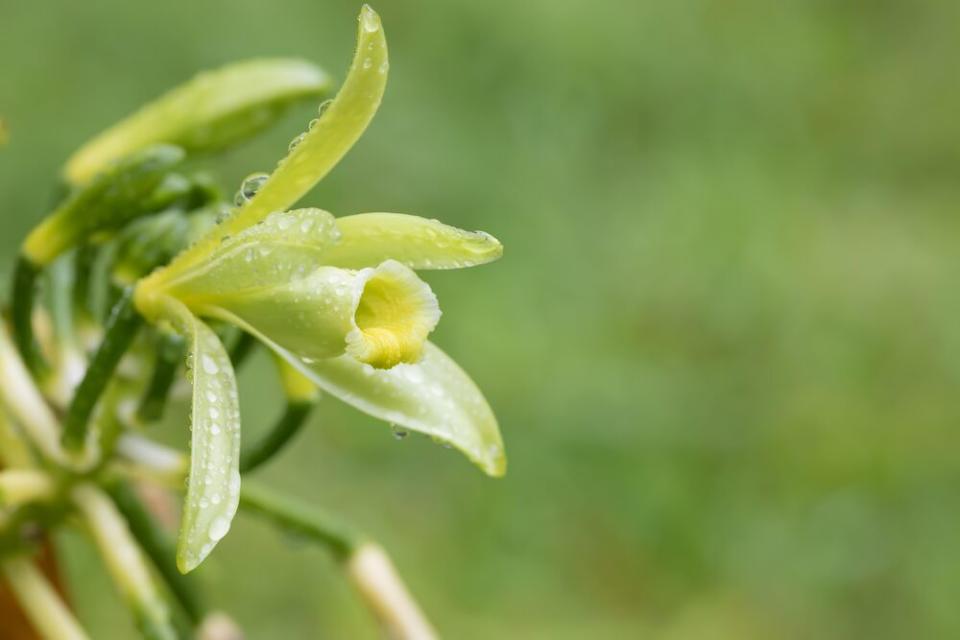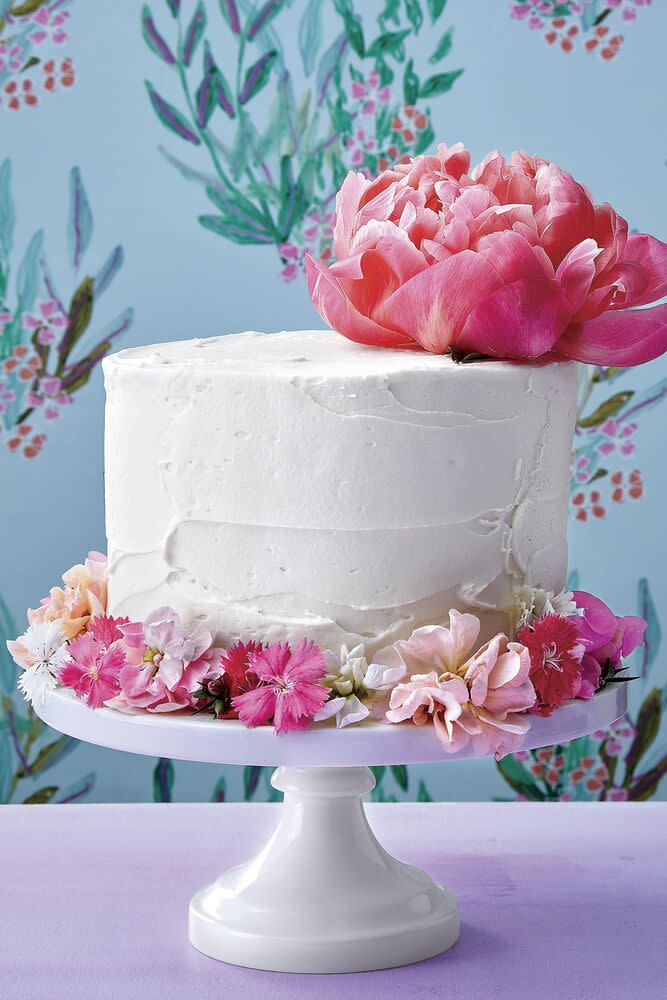Wait—Am I the Only One Who Didn't Know Vanilla Comes from Orchids?

Have you ever wondered how that little bottle of vanilla extract in your pantry came to be? You’ve come to the right place:
Where Does Vanilla Come From?

Vanilla comes from orchids. You know, orchids: Those tall, beautiful, elegant flowers you associate with Olivia Pope’s apartment and Trader Joe’s entrances. (Or is that just me?)
Well, not exactly those flowers … but pretty close.
Vanilla beans come from a genus of orchid called—you guessed it—Vanilla. There are about 110 vanilla orchid species.
The most common one is called V. planifolia, or flat-leaved vanilla. Native to parts of Mexico and Central America, V. planifolia is the world’s leading source of commercial vanilla flavoring.
V. planifolia is the only orchid species (out of about 28,000) that produces fruit, also known as the pod. You may have heard the pod referred to as the “vanilla bean.”
Pods are picked from the orchids before they are fully ripe. They are then plunged into hot water and dried in the sun for several months.
You can purchase these dried vanilla beans in the grocery store and use them to infuse natural flavors into liquors, syrups, ice creams, and more.
Vanilla beans can also become vanilla extract. Vanilla extract is the result of soaking ground vanilla beans in a solution of ethanol and water.
Vanillin, the flavor compound that produces the distinct vanilla taste and aroma you’re familiar with, is soluble in alcohol. The ethanol in the solution pulls the flavor out of the ground beans over time.
These days, vanilla is grown all over the world. Countries with tropical environments like Madagascar, Tahiti, and Mexico are among the world’s leading producers.
Related: What's the Difference Between Vanilla and French Vanilla?
Pure Vanilla Extract vs. Imitation Vanilla

FDA regulations require that anything labeled “pure vanilla extract” derives its flavor completely from vanilla beans.
Now, this doesn’t mean you won’t find other ingredients in your bottle of extract—sugars and corn syrups are often added during production. That’s fine because neither sugar or corn syrup contributes to the product’s vanilla-y flavor.
Imitation vanilla, however, is a whole different ball game. Orchids aren’t the only source of vanillin. The flavor compound is also found in certain wood byproducts, which are synthesized in other ways to produce the imitation vanilla you see on grocery store shelves.
While there are chemicals in these wood byproducts that aren’t in pure vanilla beans, imitation vanilla isn’t necessarily bad. In fact, it’s often used intentionally in baking because of the slightly different flavor that comes from it.
However, it’s important to remember that imitation vanilla isn’t as potent as pure vanilla extract. If you’re substituting one for the other, you’ll need to adjust your recipe accordingly.
Read more: What’s the Difference Between Vanilla Extract, Imitation Vanilla, and Vanilla Bean Paste?
Why Is Vanilla So Expensive?
WATCH: How to Make Honey Vanilla Fluff Cake
It’s no secret that vanilla beans ain’t cheap. In fact, last year vanilla was worth more by weight than silver. (Silver, you guys. That’s one tier away from gold).
But why?! There are a few variables at play here:
1. Growing vanilla beans is hard and it takes a long time.
“Vanilla vines take two to four years to fully mature, and their flowers only bloom for one day of the year,” according to a video from Business Insider. “In order for the plants to produce beans, they have to be pollinated that day. In most places where vanilla is grown, it isn't a native plant, and there aren't bugs or birds capable of pollinating the flowers. Vanilla is native to Mexico, but deforestation there has greatly reduced its natural habitat. In Madagascar, where over 80% of vanilla is produced, the flowers have to be pollinated by hand. The pods need several months to cure after harvesting. The whole process is time-consuming and labor-intensive.”
2. Farmers are having trouble keeping up with the high demand that resulted from the “all-natural movement.”
Imitation vanilla took over the market a few decades ago because it was—and still is—easier and cheaper to produce than pure vanilla. It was for this reason that a lot of vanilla farmers cut back production or left the vanilla game entirely. However, the recent push for all-natural foods means that more and more people are seeking out vanilla made from vanilla beans. Declining production combined with a rapid increase in demand is a recipe for a very expensive product.
3. Extreme weather events are becoming more frequent in areas that produce vanilla.
Madagascar, one of the world’s leading vanilla producers, is prone to cyclones. Because of climate change, these storms are happening more often and are becoming more intense. Since vanilla takes a long time to grow, one bad storm could wipe out years of work. Some farmers have decided that it’s just not worth the risk.
4. People are stealing vanilla beans from farmers.
Vanilla bean theft is a very real problem. I mean, it makes sense: When a lot of people want something that’s relatively exclusive, others will go to extreme and often illegal lengths to get it and sell it themselves.
Vanilla Recipes

Does all this vanilla talk have your mouth watering? Same. Here are some of our favorite vanilla recipes to quell your cravings:

